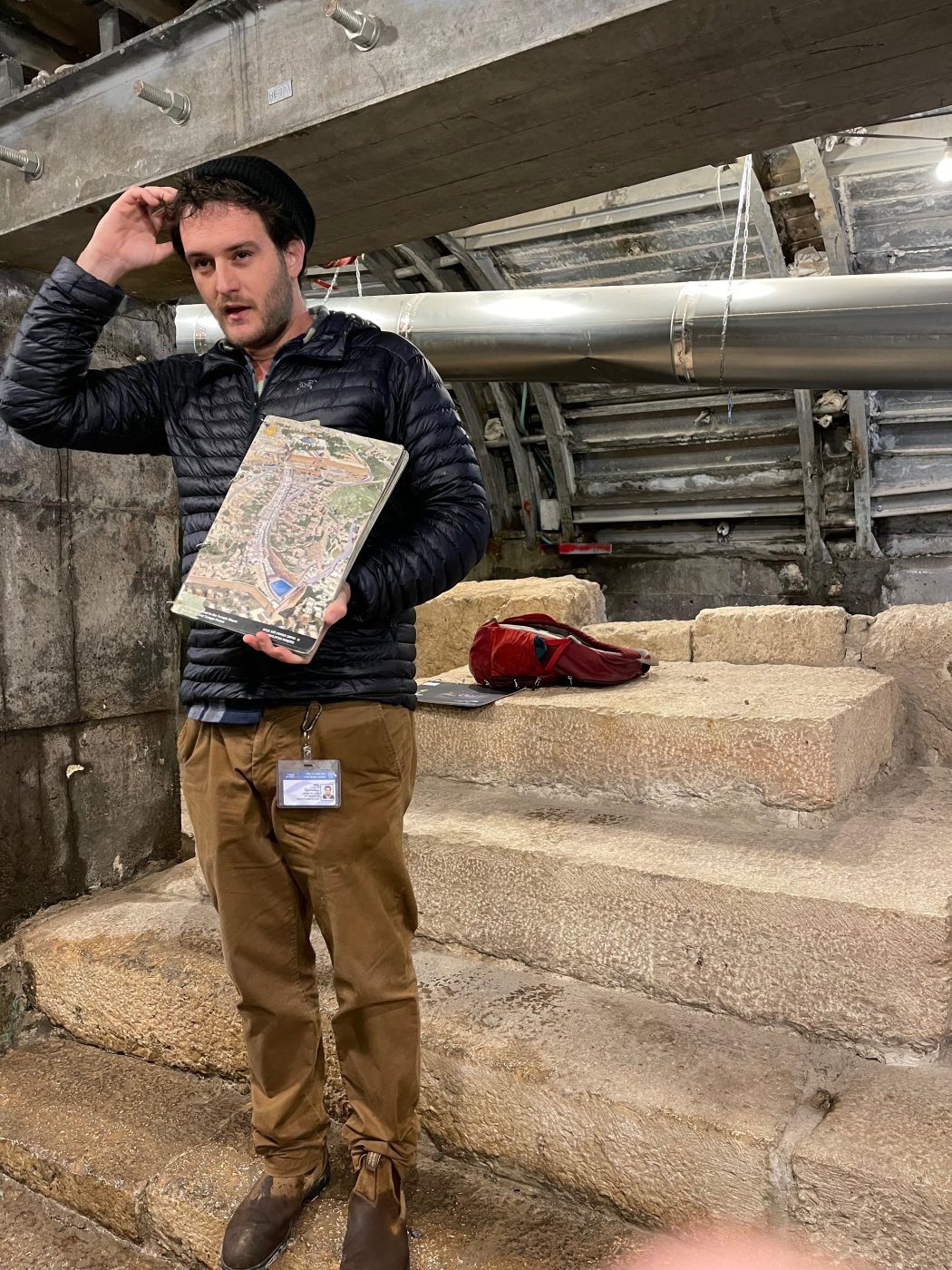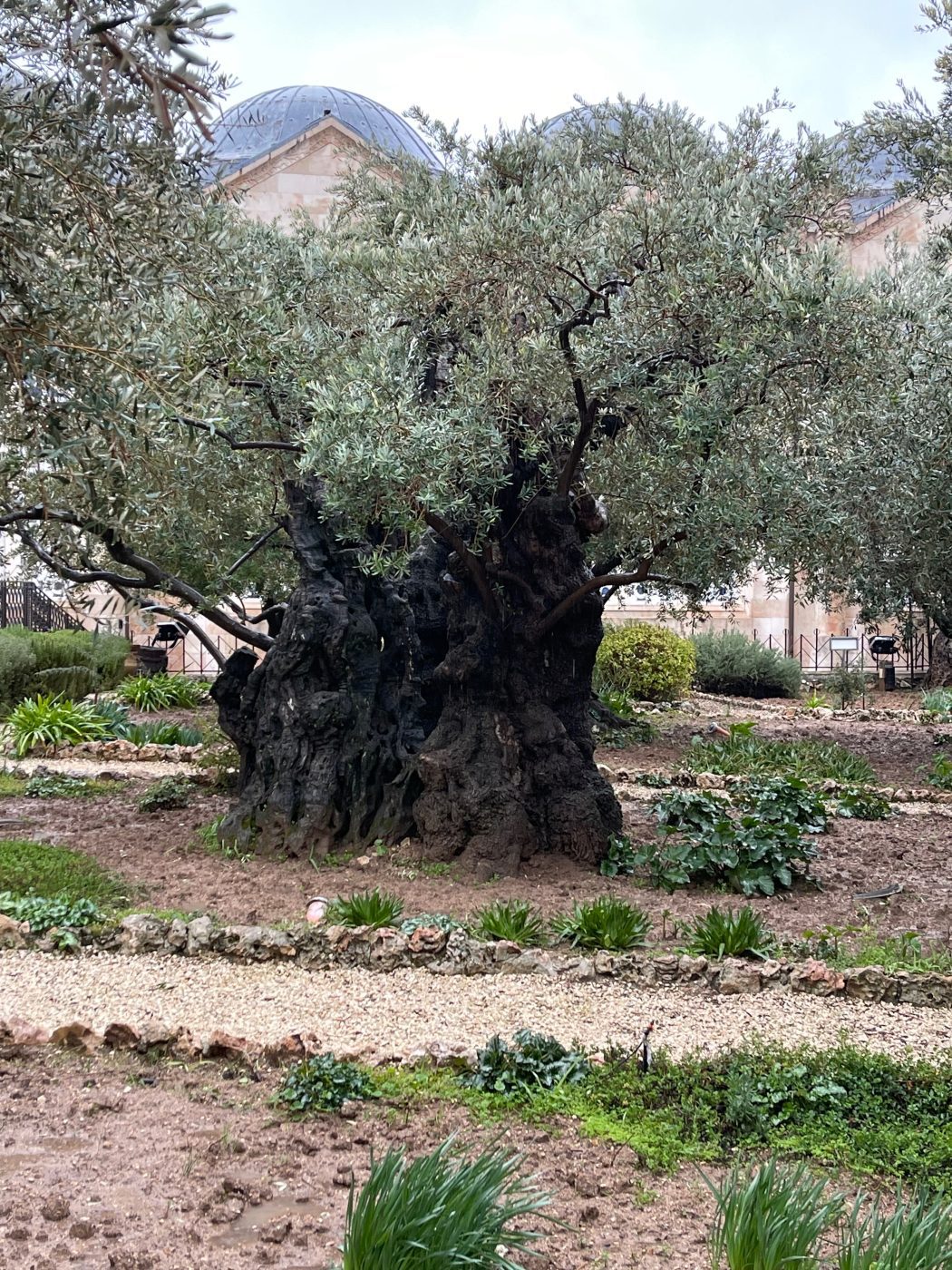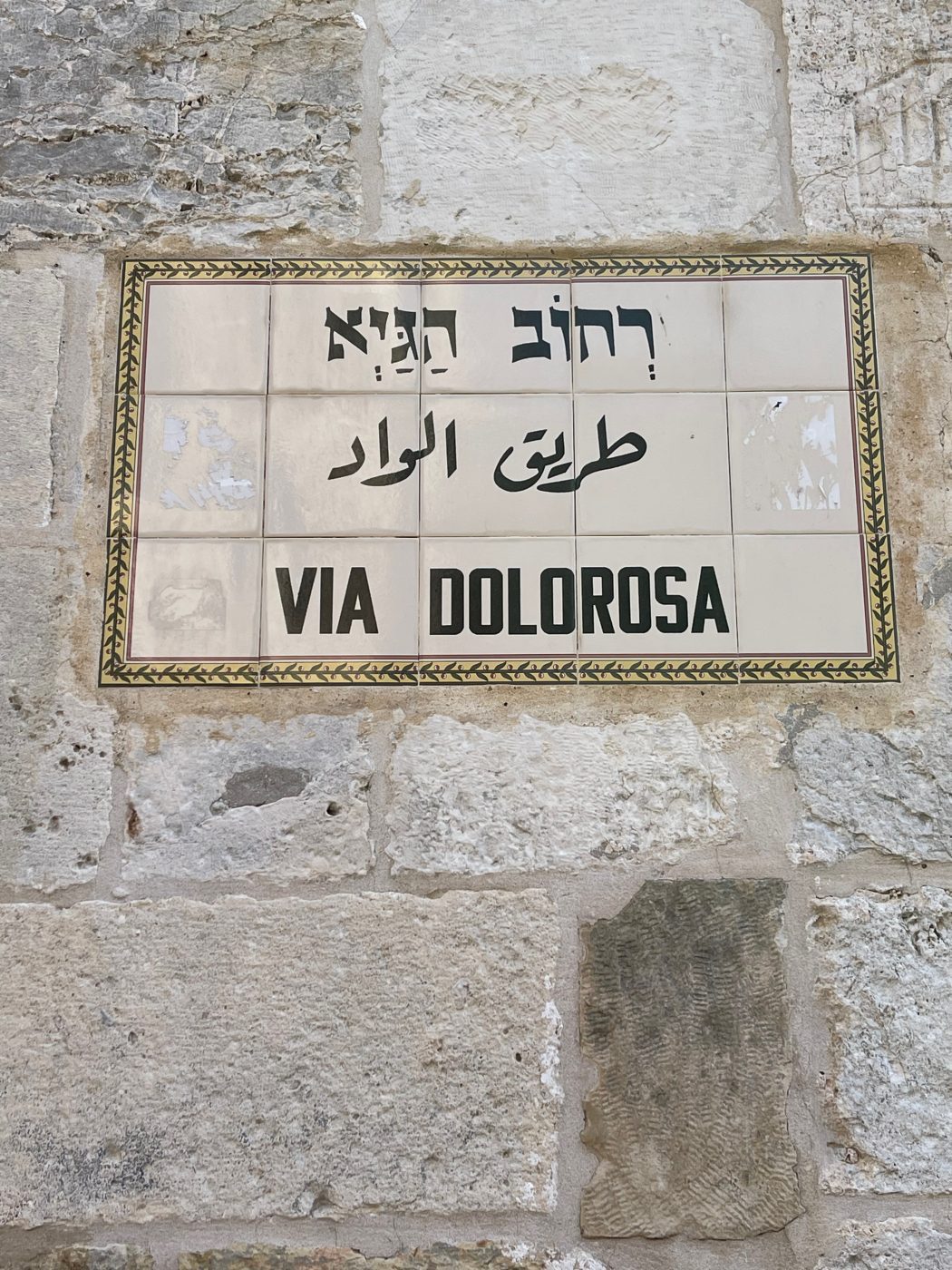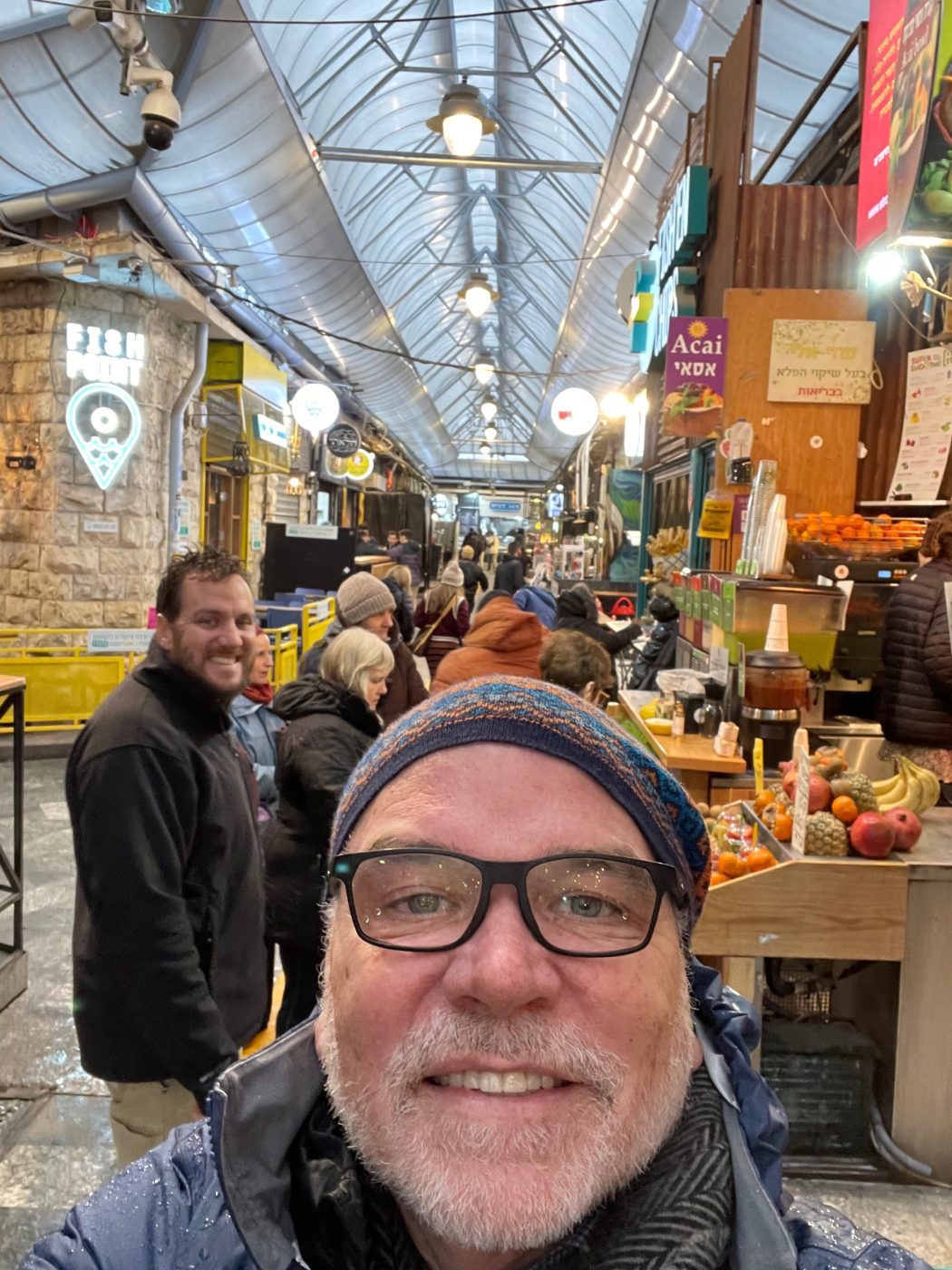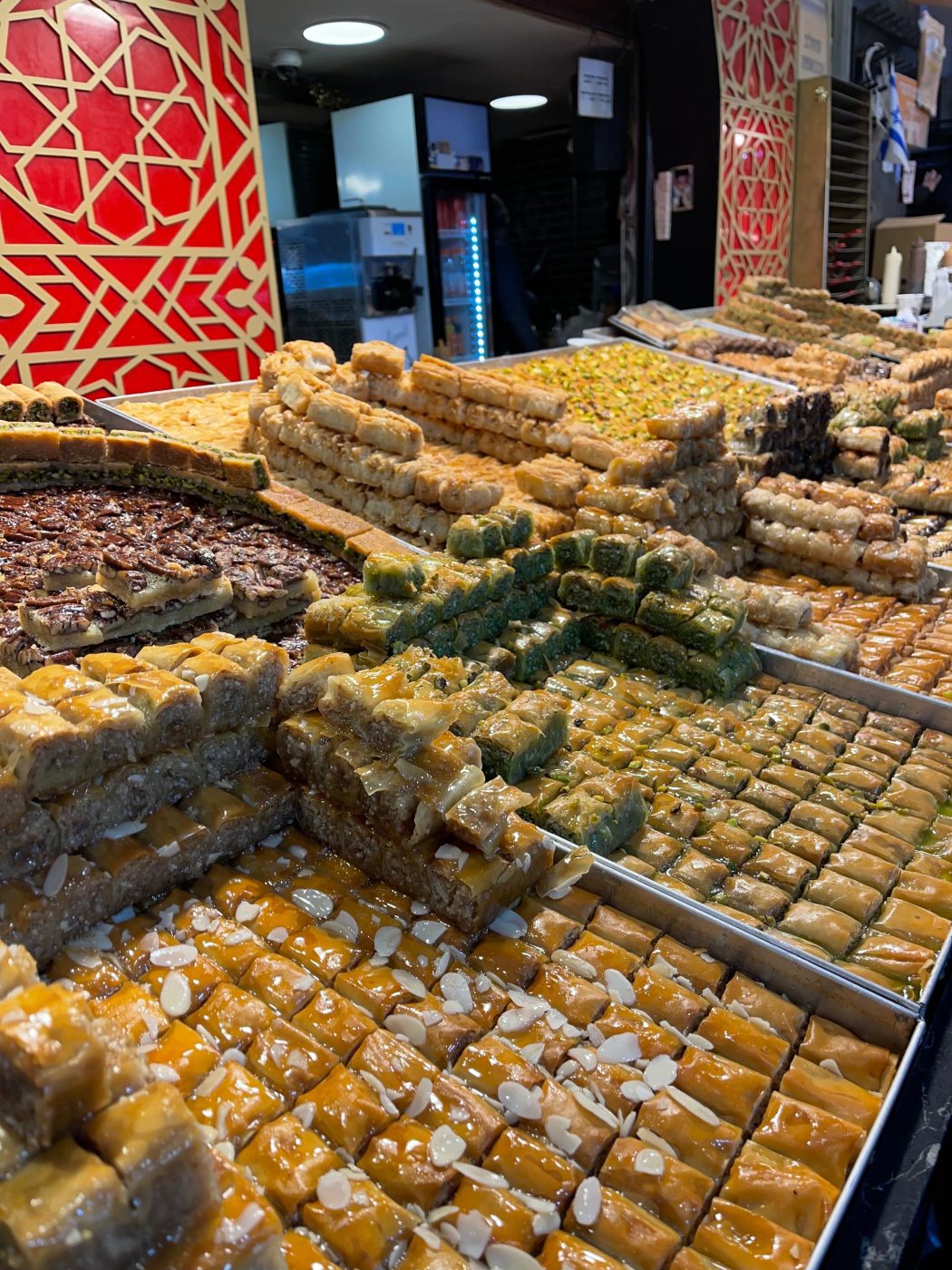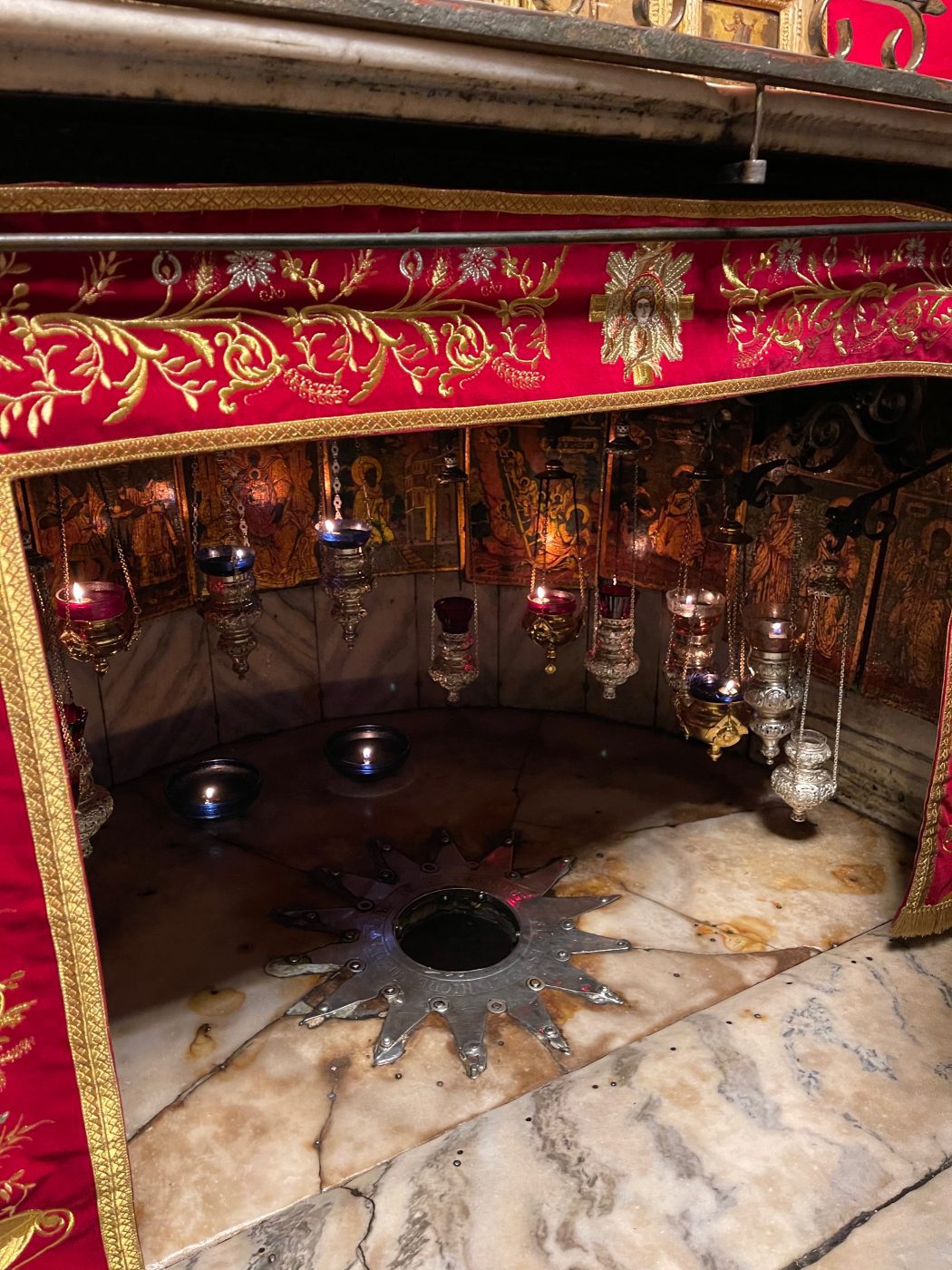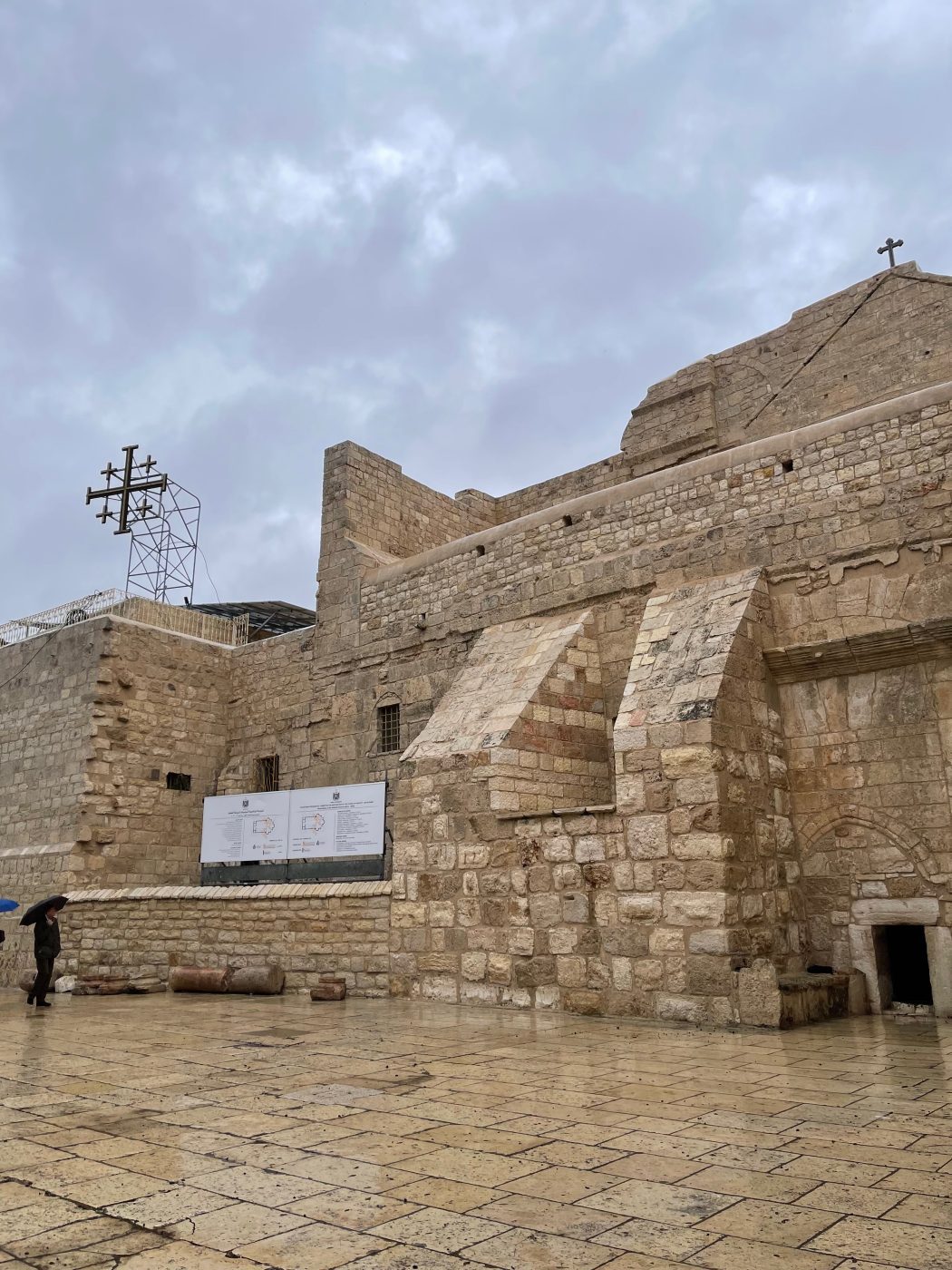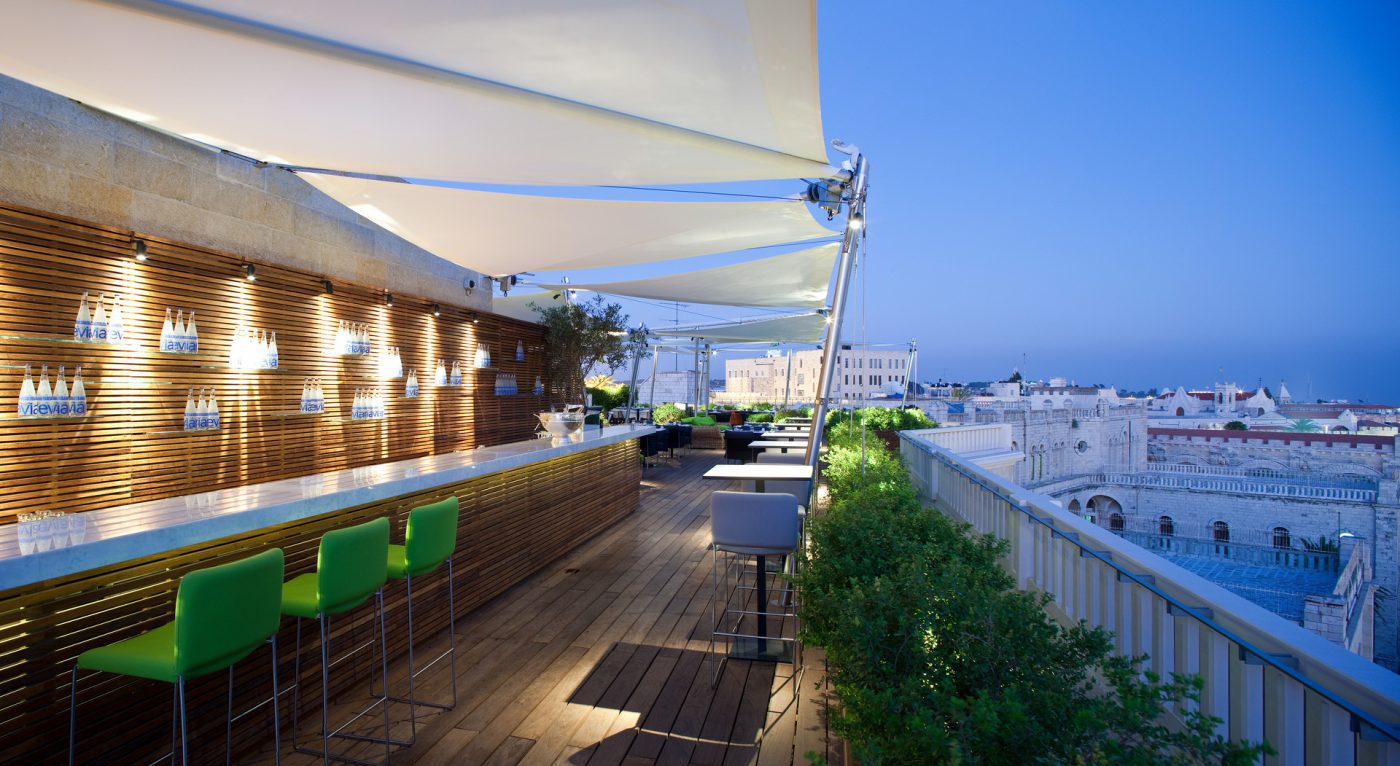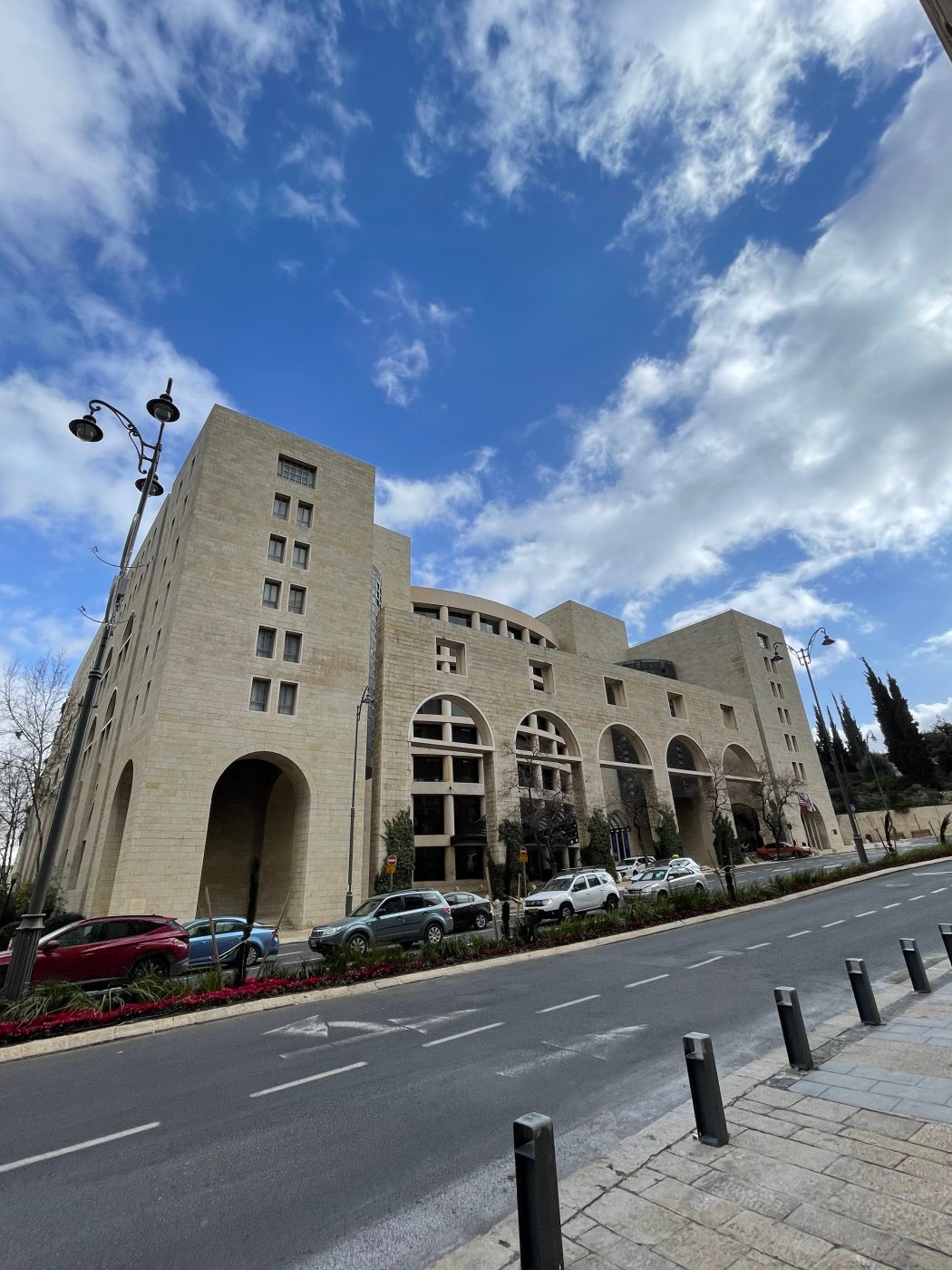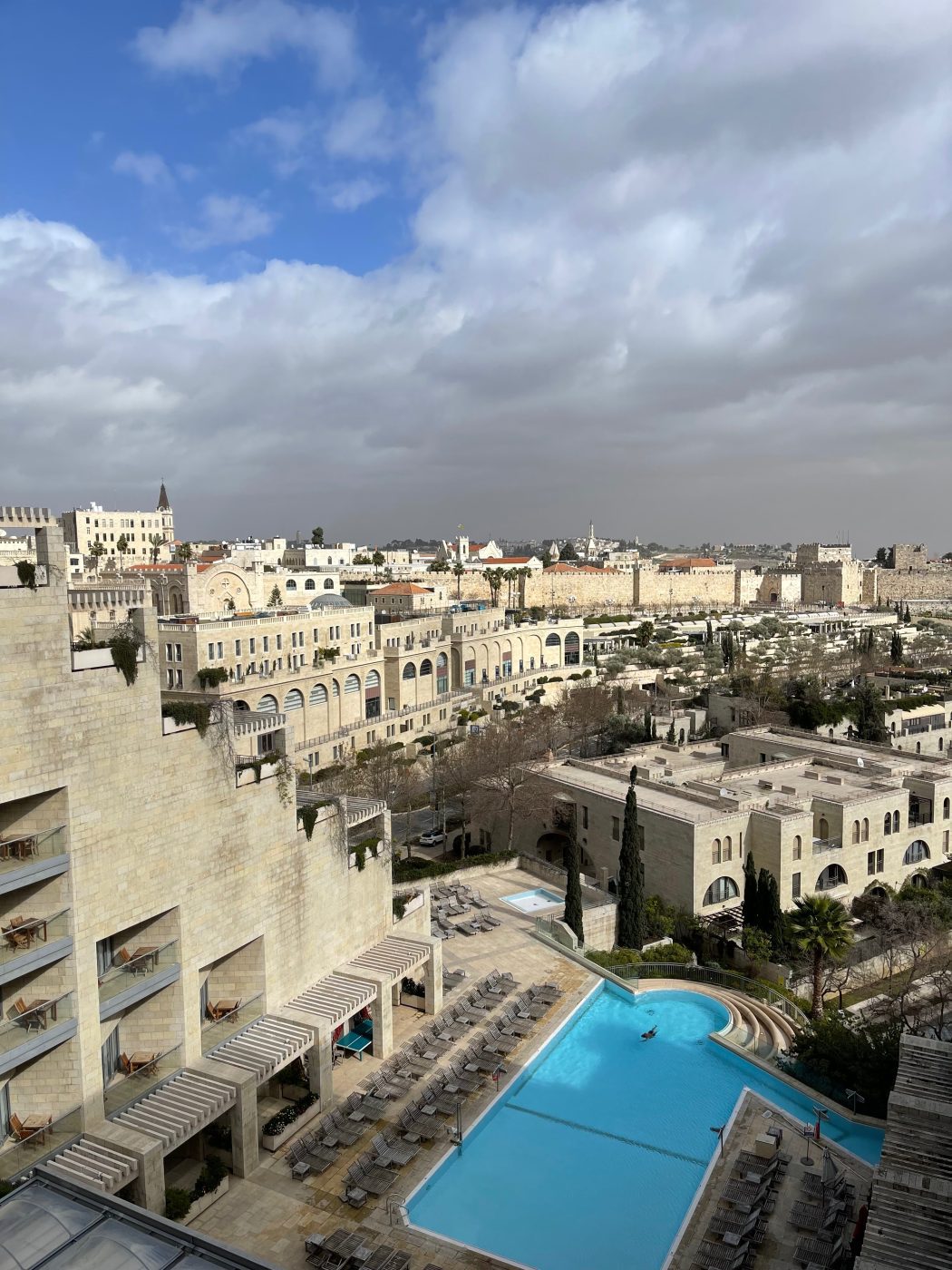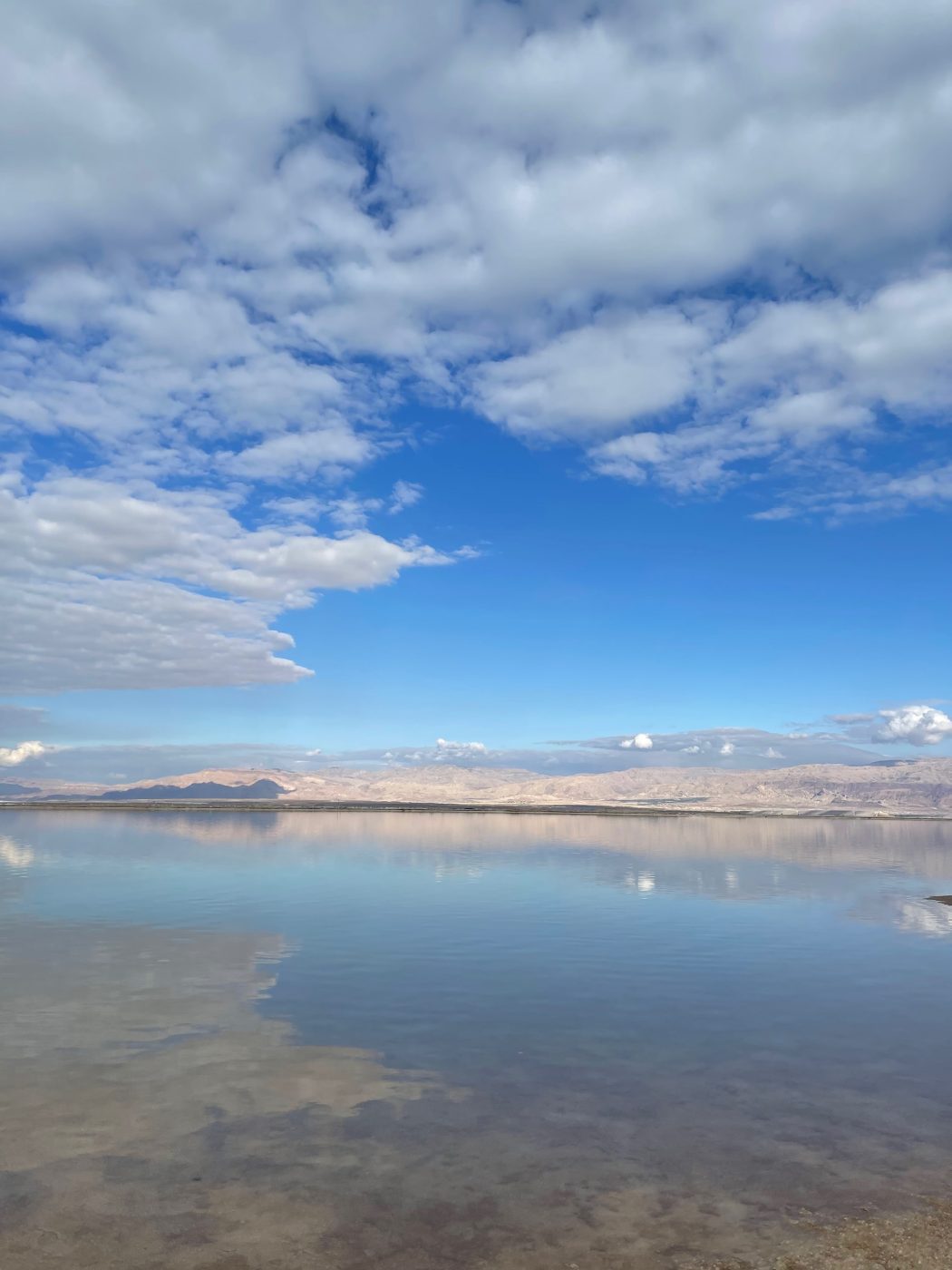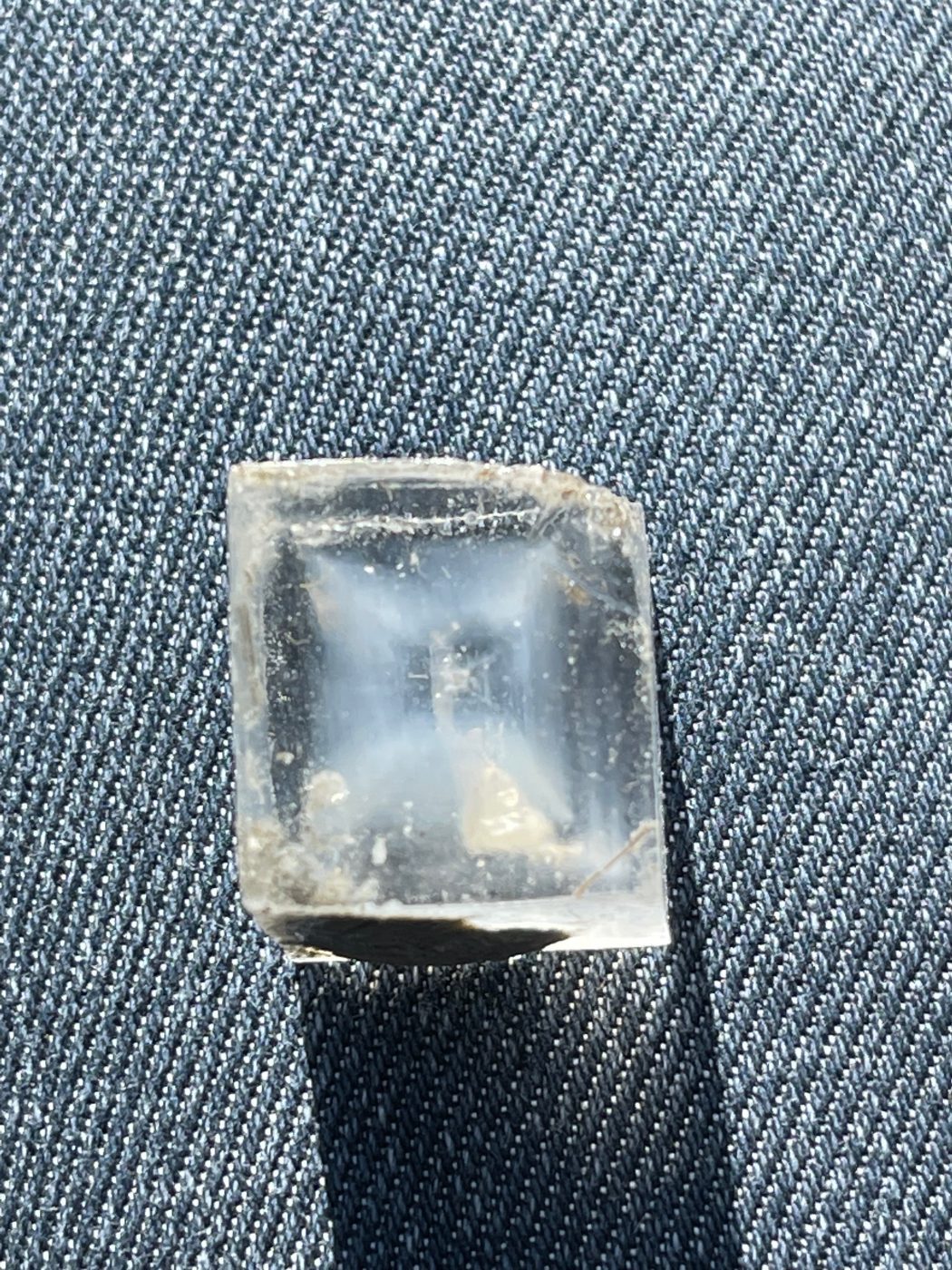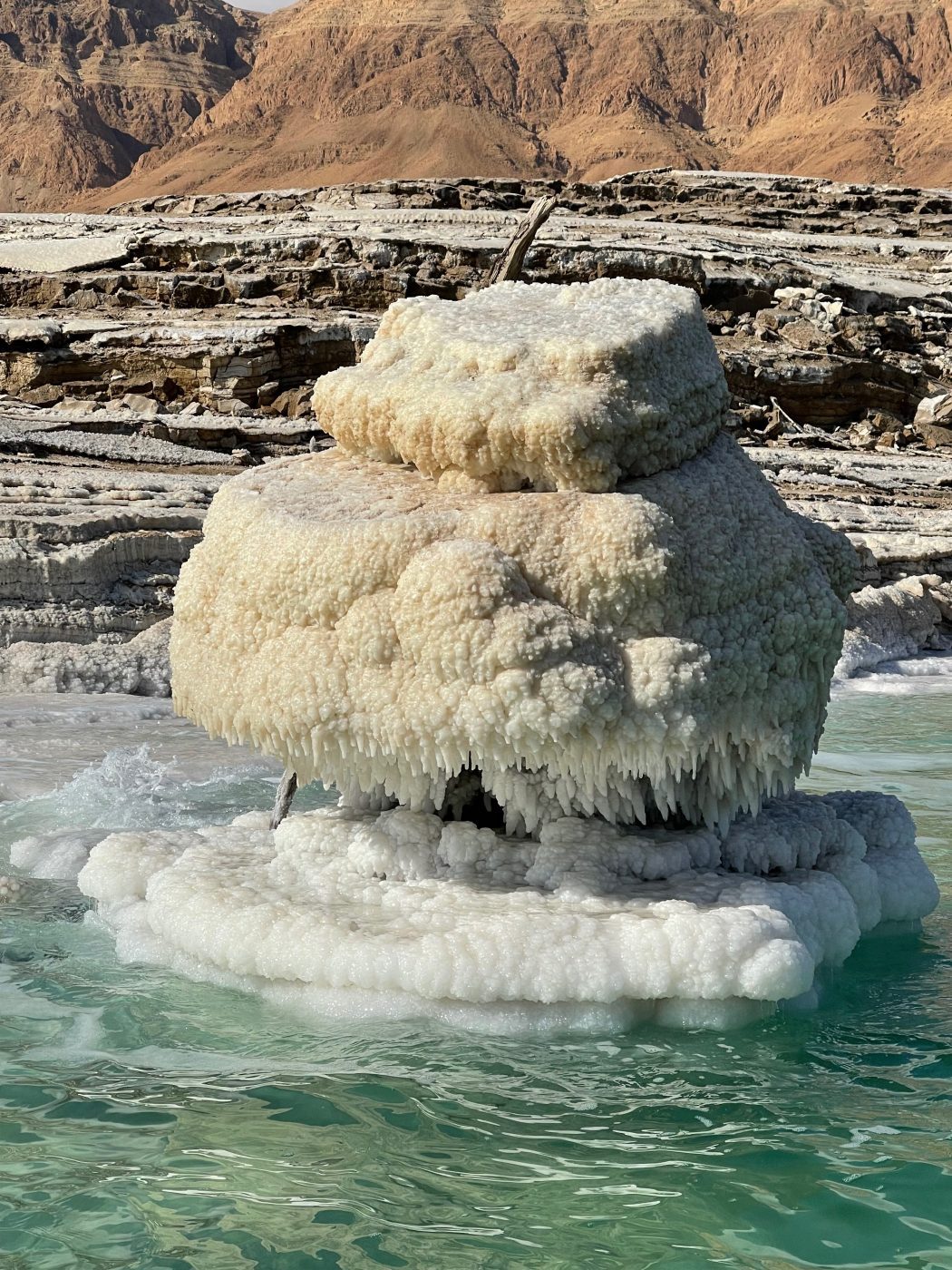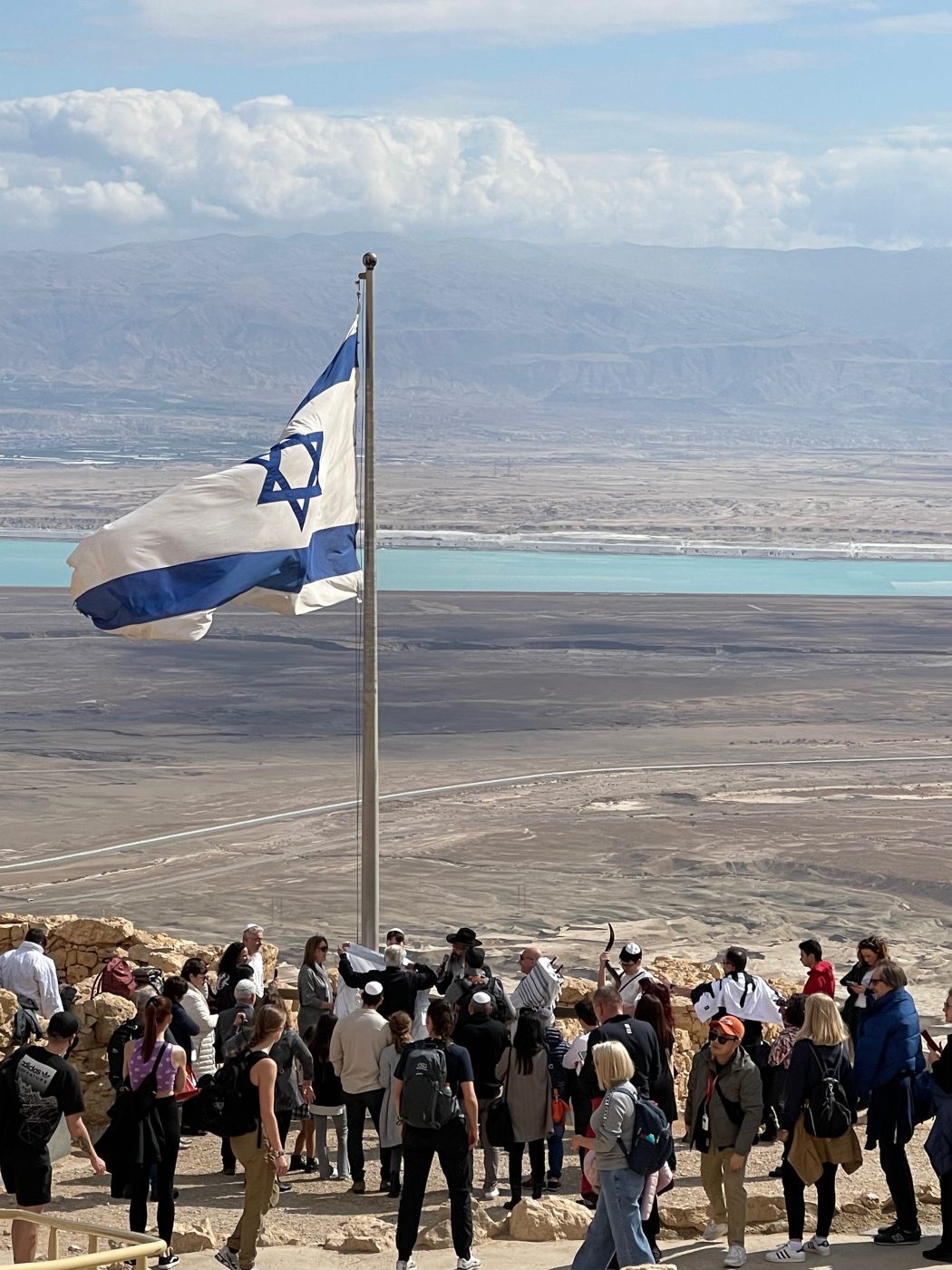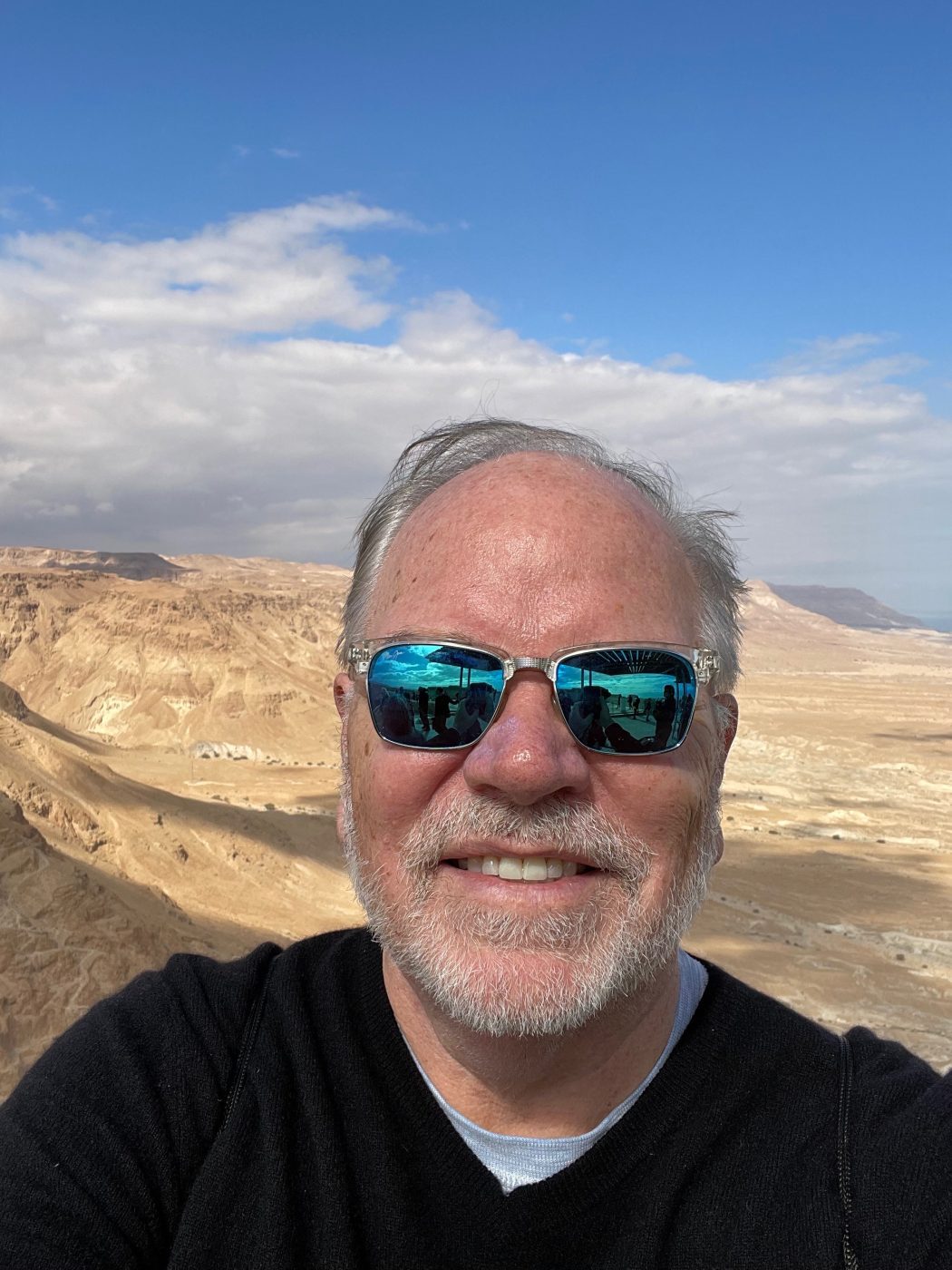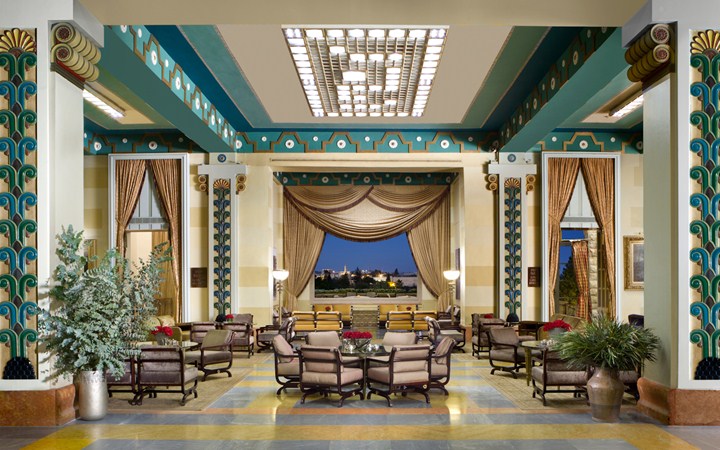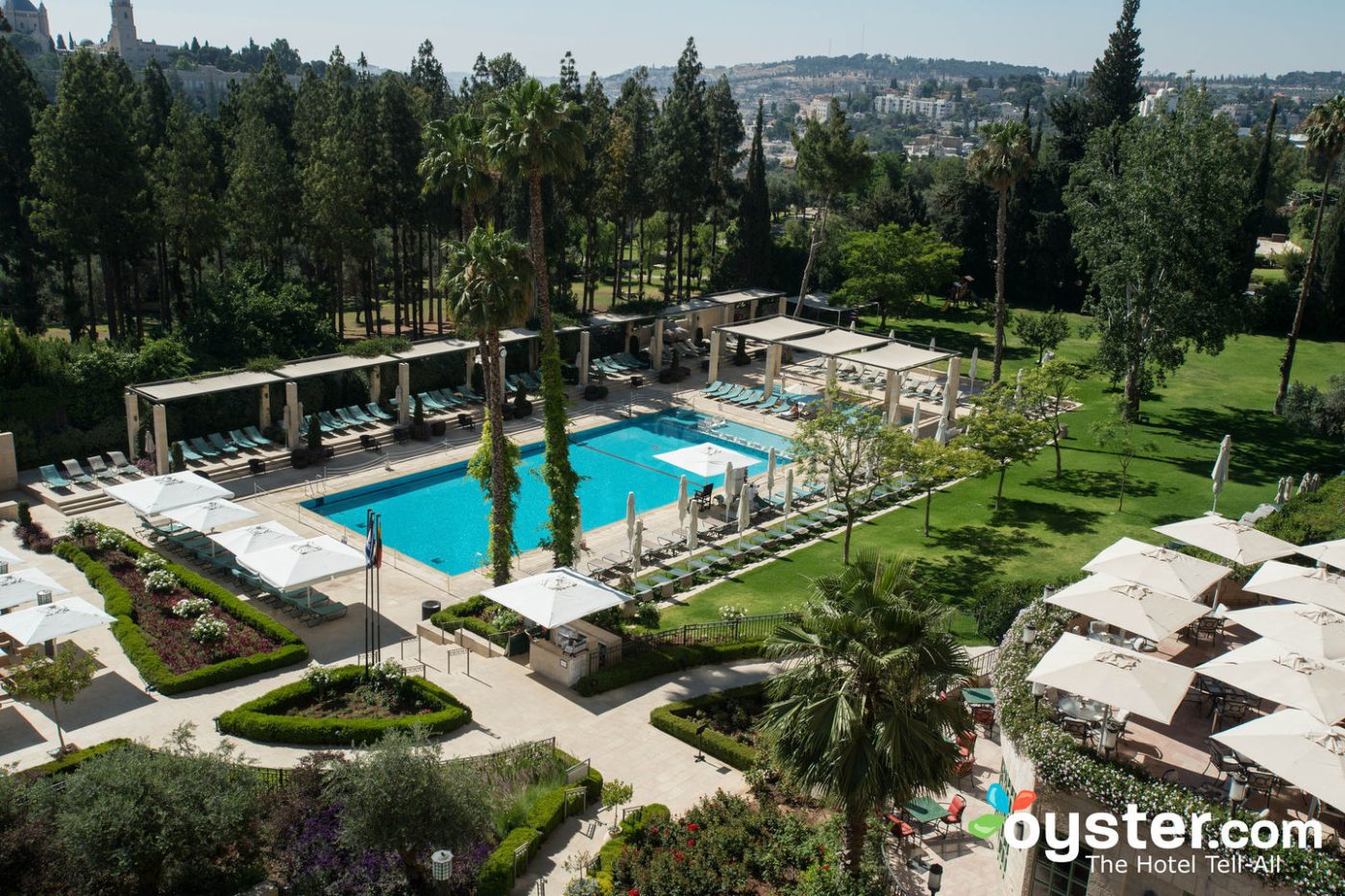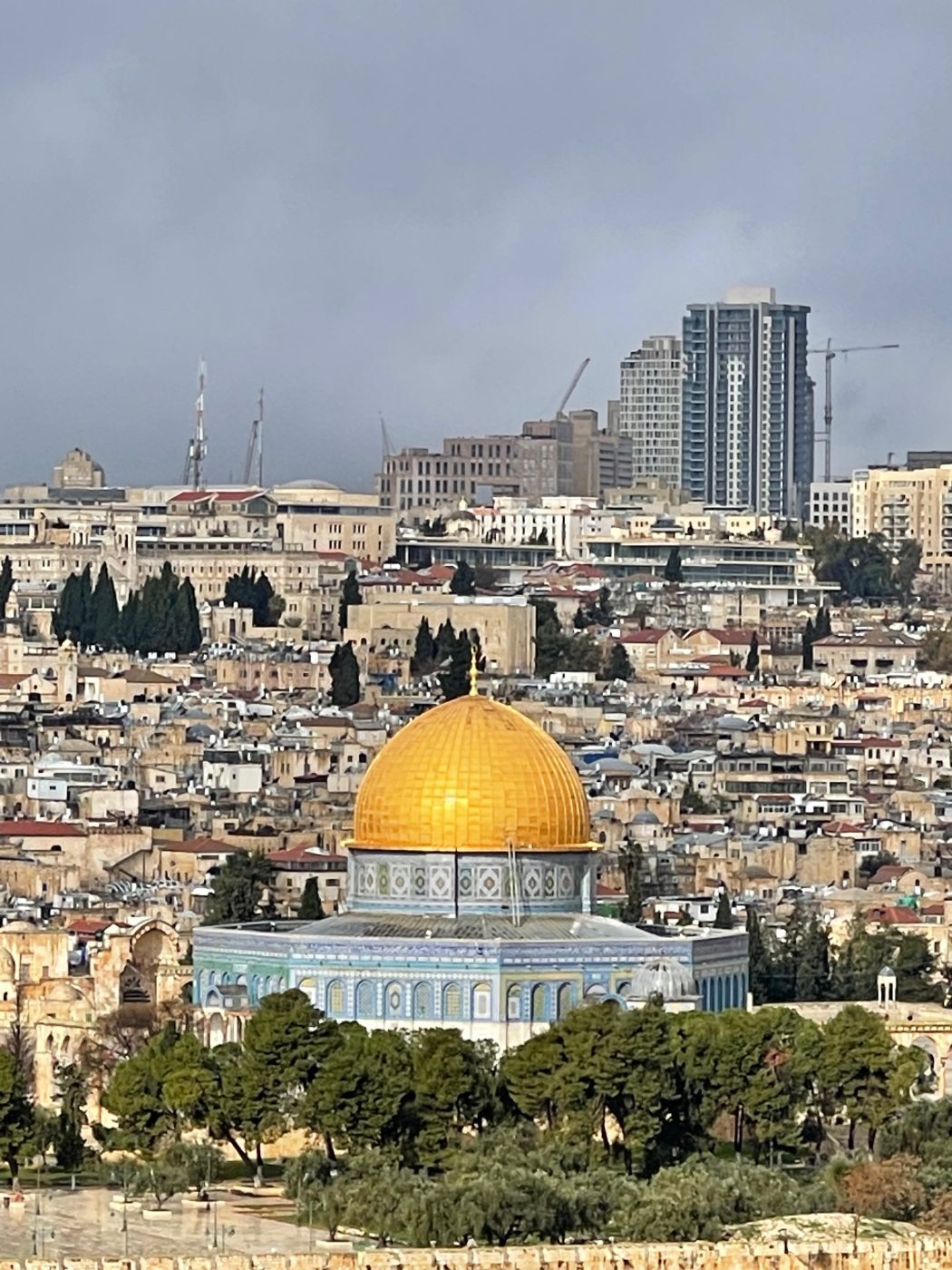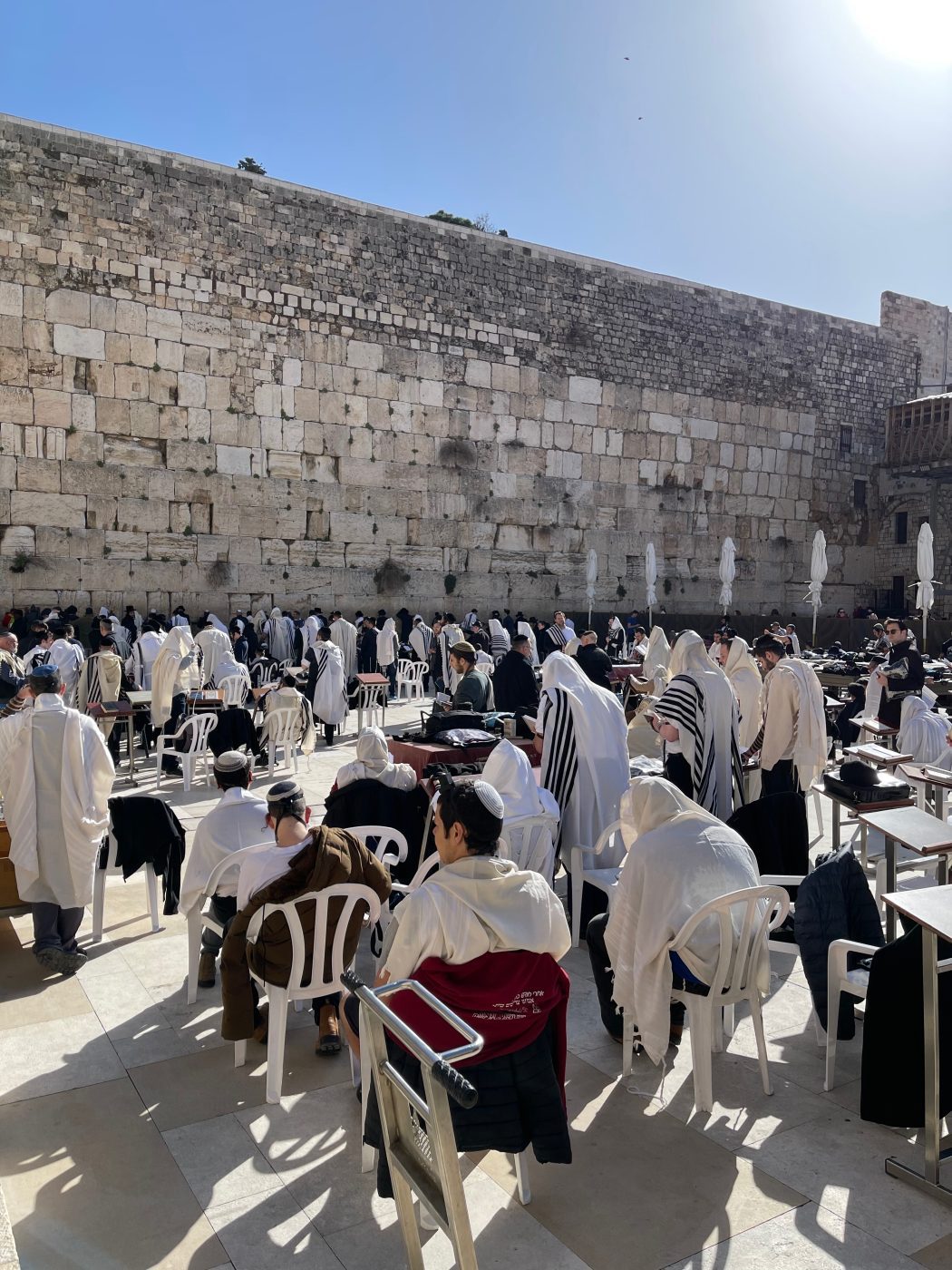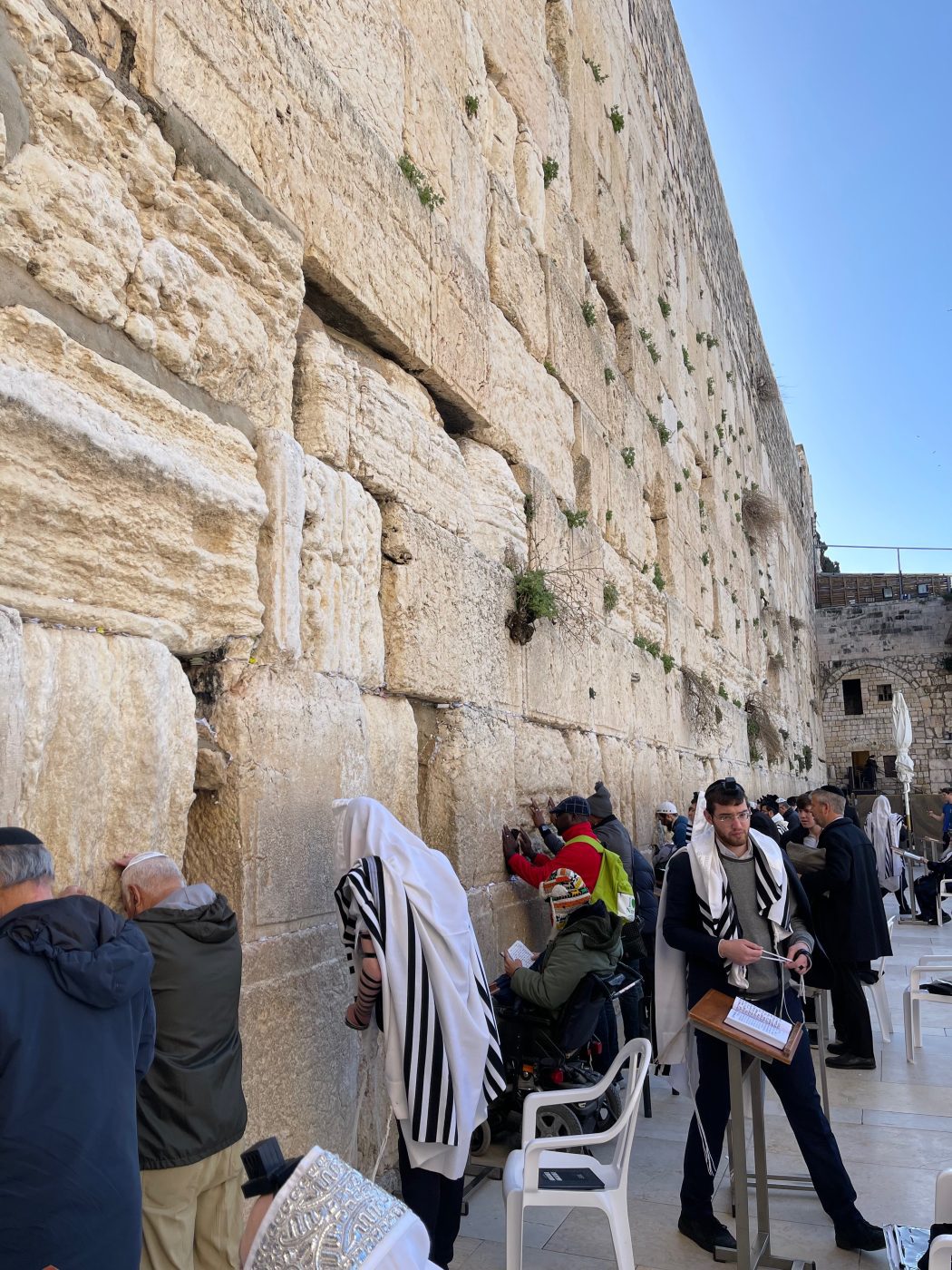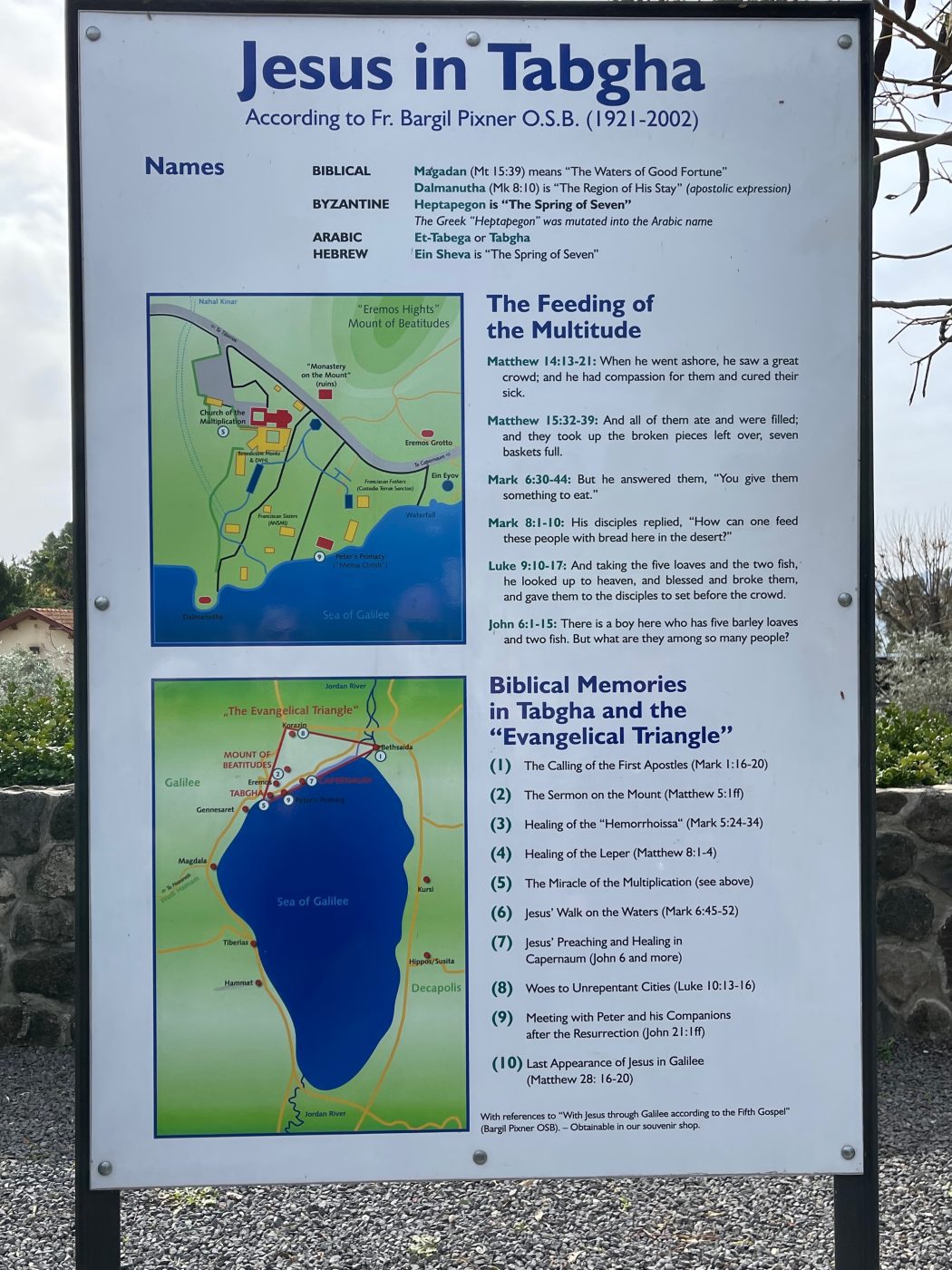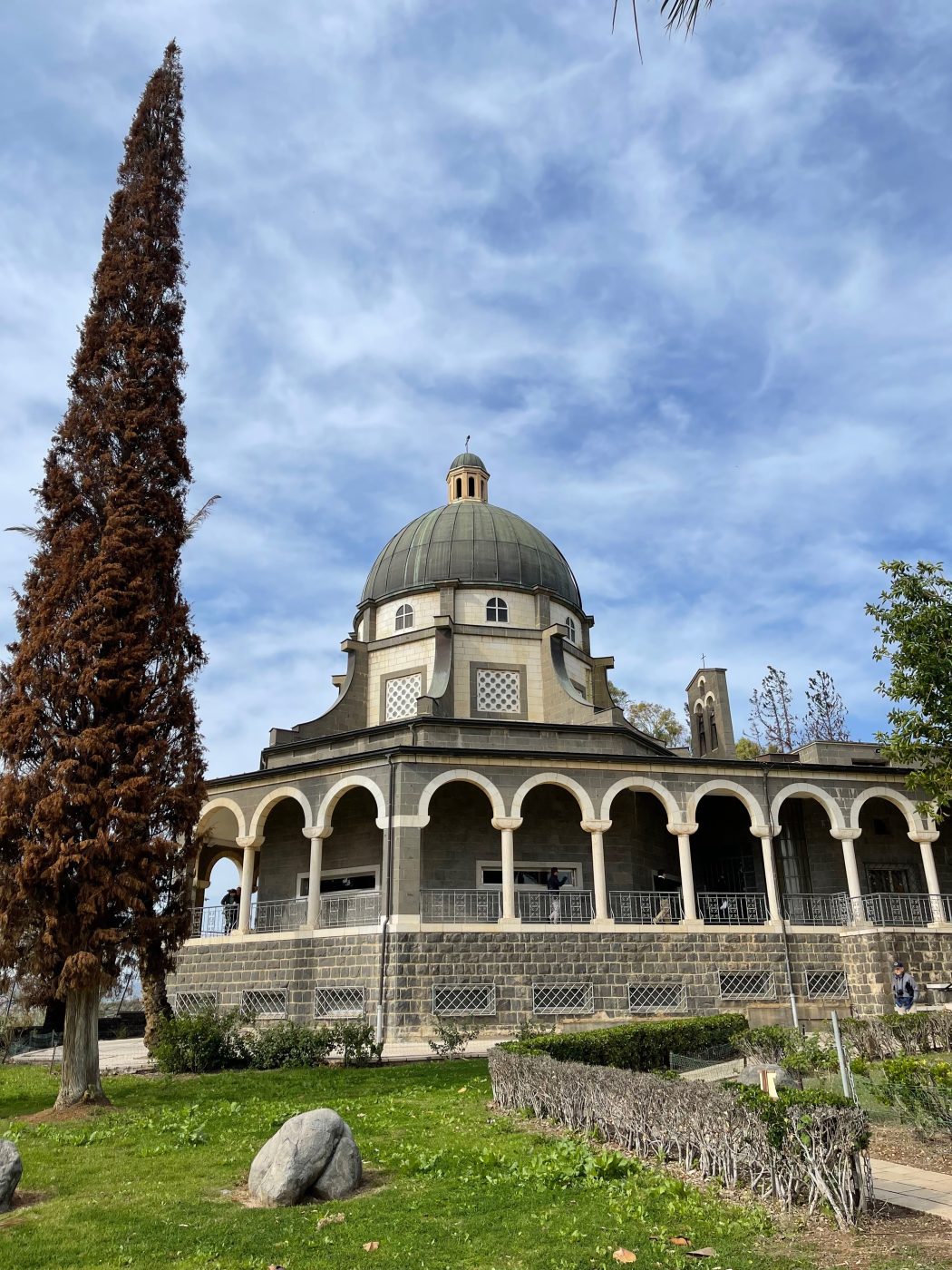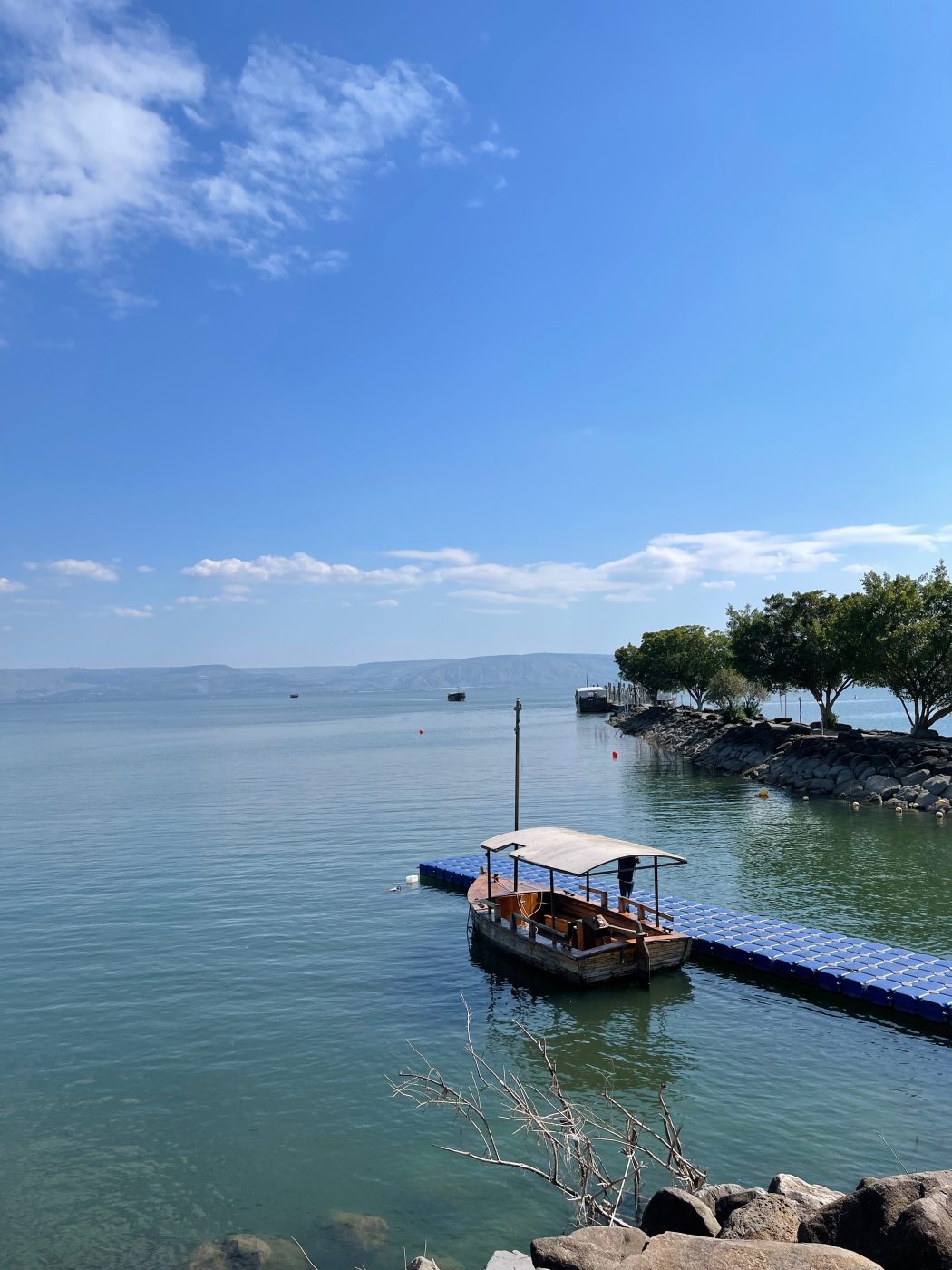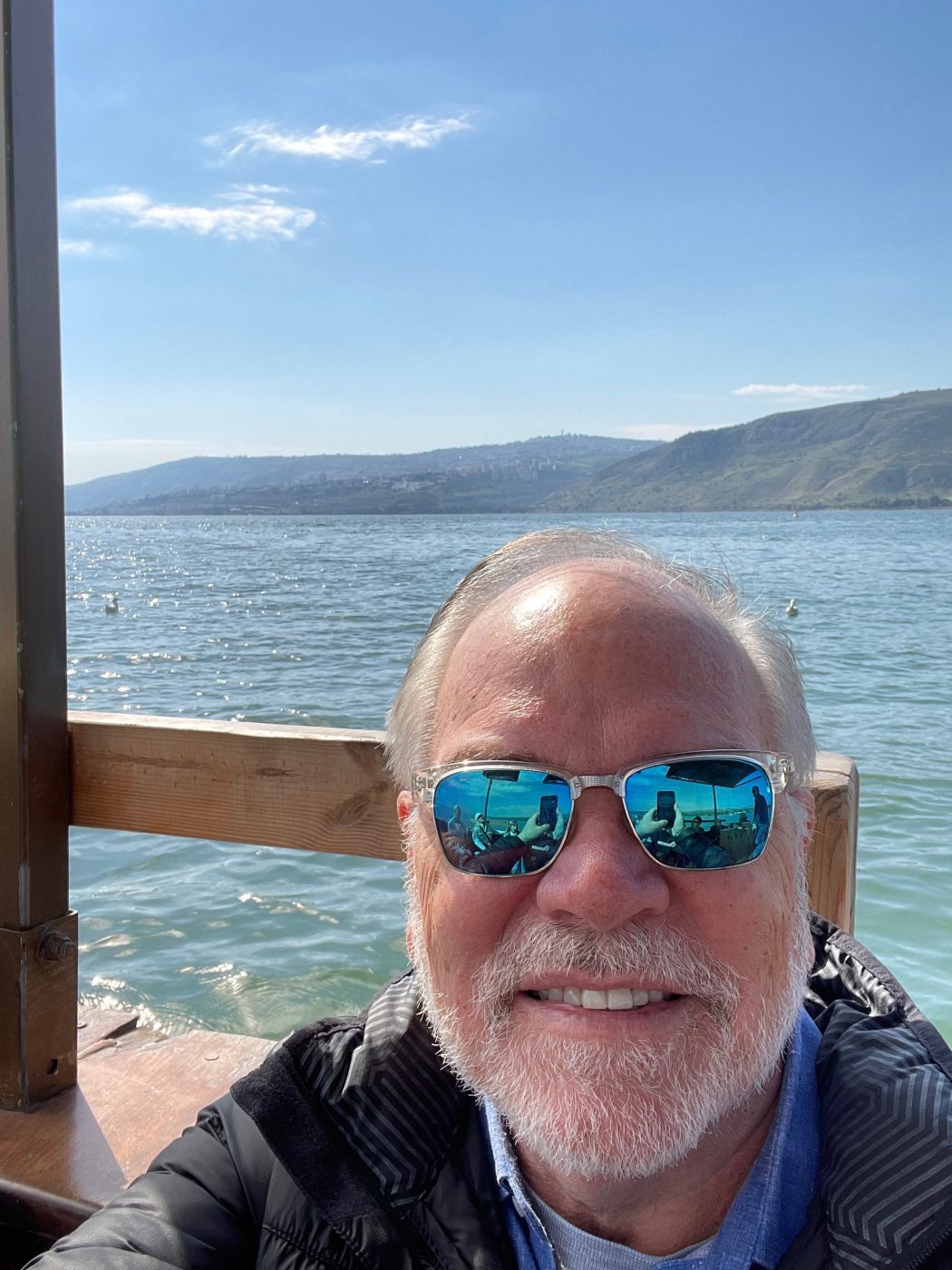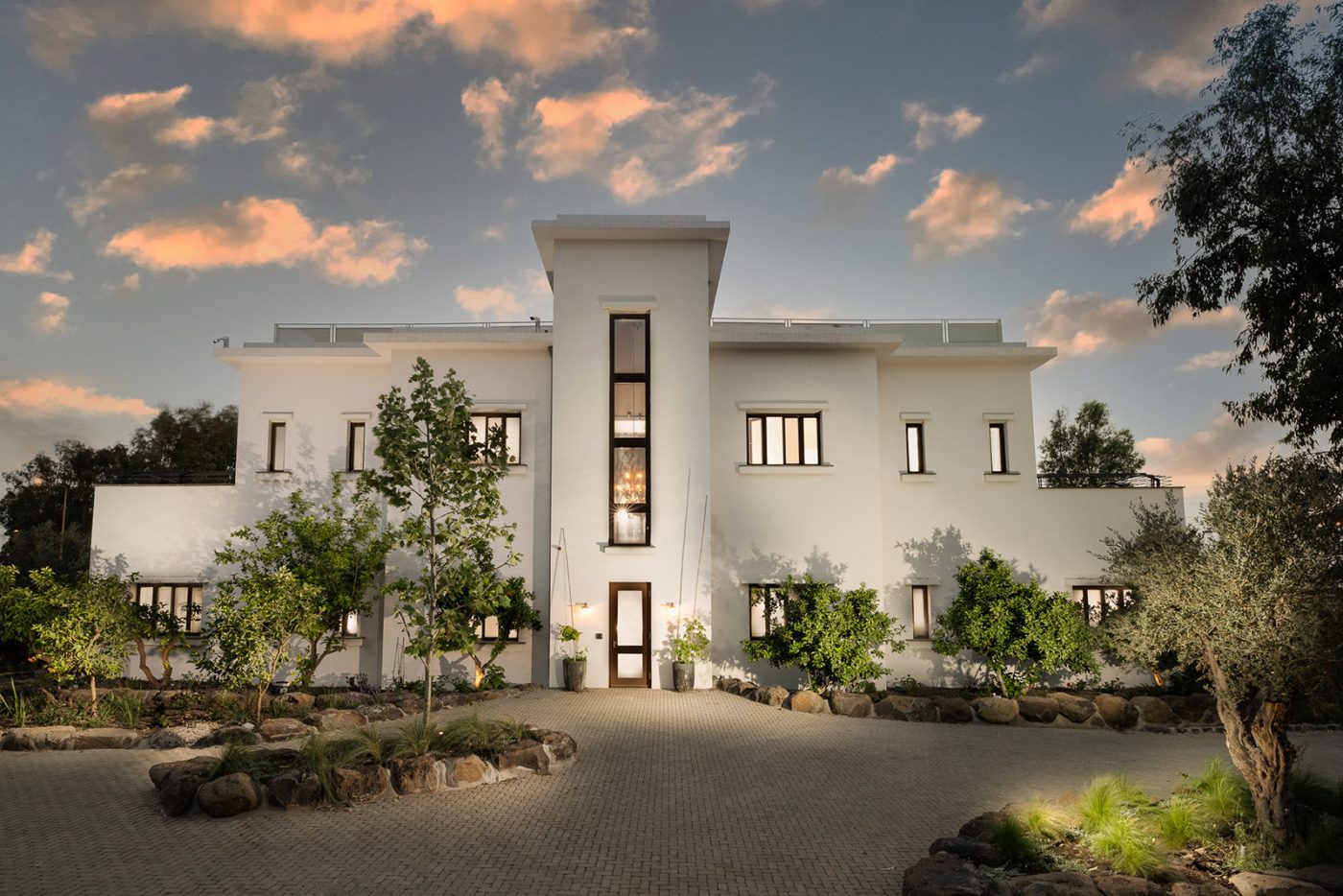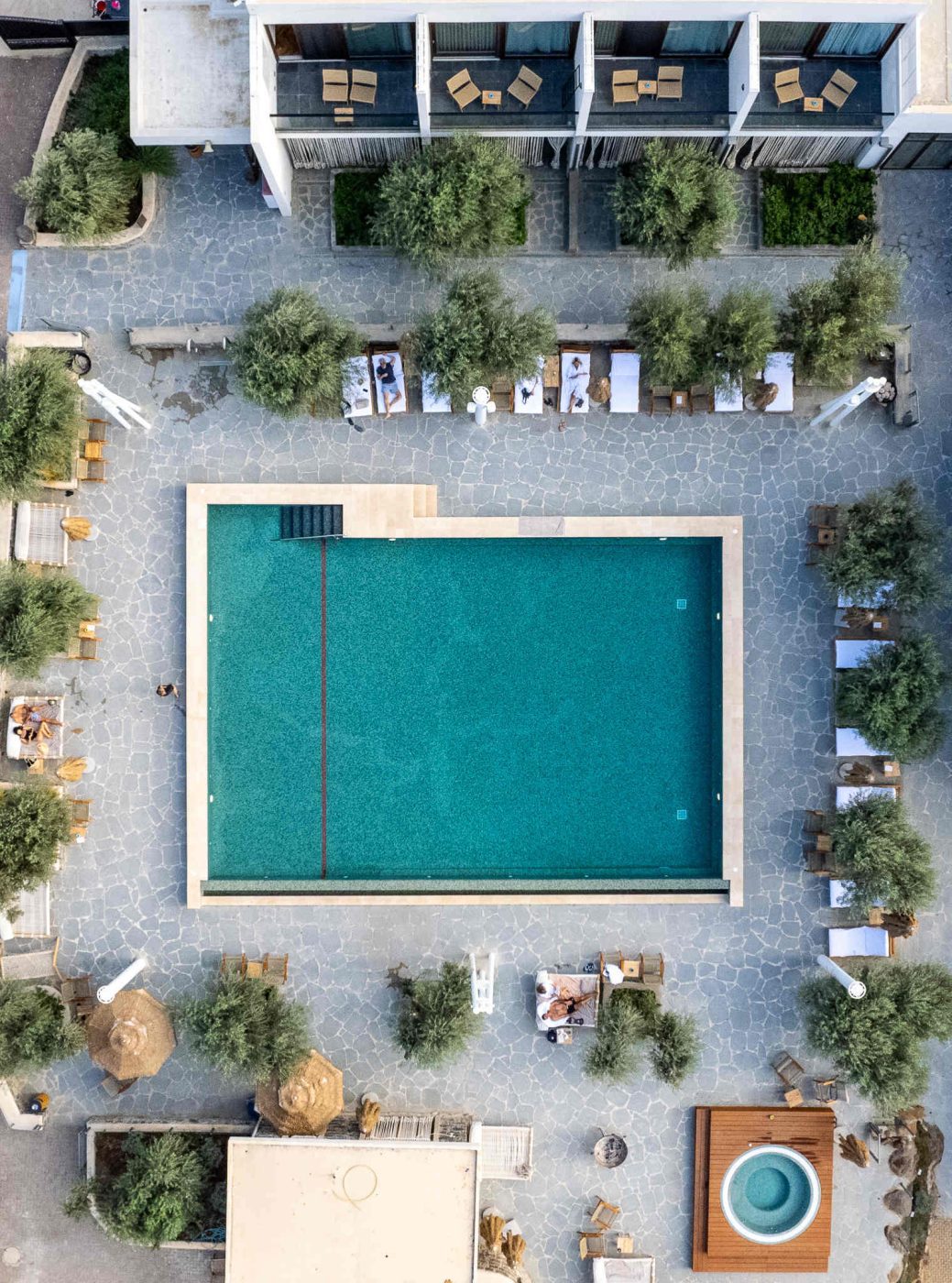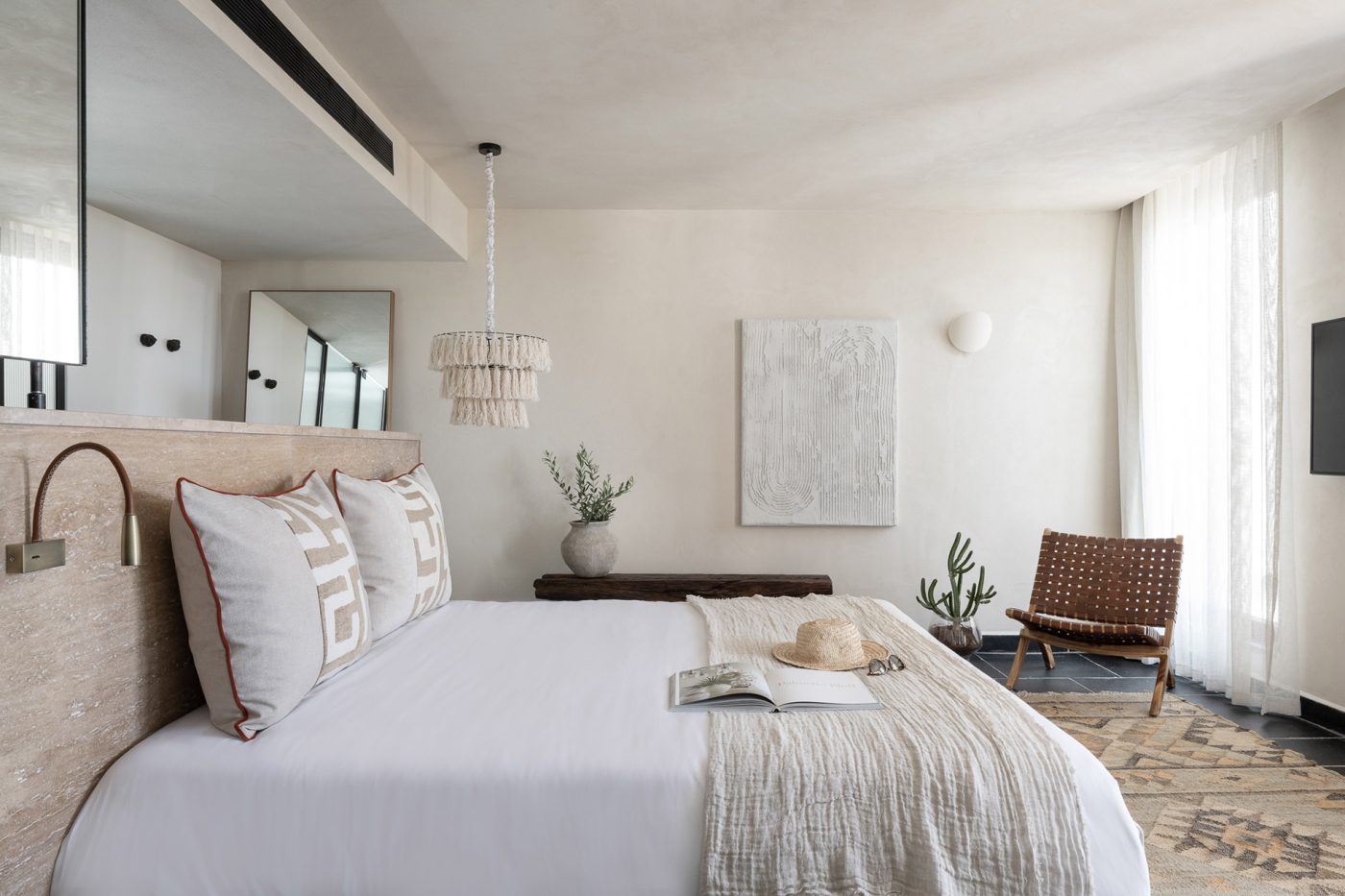If I hadn’t had the chance to go to Israel, I may have never gone – and I would have missed out on the trip of a lifetime. In recent months, I have had quite a few inquiries for Israel, so when I was given the highly sought-after opportunity to spend eight days with Travex and Rebecca Recommends exploring what is considered to many the Holy Land, I jumped at the chance. Whether you want to retrace the steps of Jesus, learn more about your Jewish heritage or simply visit some of the most ancient religious sites in the world, Israel is a destination that means something different to every type of traveler – and an itinerary should reflect that with care. Below, I want to highlight only some of my top experiences and hotels I had the opportunity to visit in a country that is well worth learning more about.
We initially flew into Tel Aviv and embarked on a forty-five-minute drive to Jerusalem which was interesting because I had envisioned Israel being flat and desert-like but was surprised to find it green and full of rolling hills with large rocks all over the place. Our arrival was marked by a two-day rainstorm named Barbara that brought with it snow on hills and thinned outlines in a few places. The rain didn’t stop us from diving head-first into Jerusalem’s museums with a visit to Israel’s official Holocaust Museum, Yad Vashem. This was a moving experience for everyone in our group. The museum is very involved and tells a story that focuses on the people whose lives were lost rather than shedding light on the oppressors. There was an original cattle car monument on display that was used to transport Jews throughout Europe, a children’s memorial inside of an underground cavern, and enough stories and names to get lost in for days. Somber, but beautiful. We did the museum in two and a half hours, but you could truly stay the entire day. Following Yad Shavem, we visited The Israel Museum, the country’s national gallery, where the Dead Sea Scrolls are displayed in the Shrine of the Book. I highly recommend visiting and gaining insight into the Dead Sea Scrolls, not only for their importance in world history but to also help make sense of a later trip to the Dead Sea which will most likely be included on an itinerary.
The same day, we drove to the City of David which sits south of Jerusalem’s “Old City” and was the ancient epicenter of Jerusalem 4,000 years ago. The city is practically one large archaeological site. For the last 150 years, The City of David has been revealing some of the most important archeological discoveries of the ancient world. We were led on a private VIP tour behind the scenes into the excavations of the Pilgrim’s Road, which has laid beneath the city for centuries. The road was once used by millions of Jewish pilgrims and Jesus himself traveling to the Temple Mount and Pool of Siloam (where Jesus healed a blind man). The site isn’t open to the public but with the help of a VWT Travel Advisor and a donation to the excavation, one can visit the site. This is such a sensational discovery that I highly recommend sending clients to see. Pictured below, you can see an ancient coin embedded in the soil.
The following day, we drove to the Mount of Olives, also called “the mount facing Jerusalem”, and took in stunning views of Jerusalem before embarking down Palm Sunday Road, the biblical road Jesus followed when he entered Jerusalem on Palm Sunday. The road is dotted with ancient olive trees and leads to the Garden of Gethsemane and the Church of All Nations which is built on the rock where it is said Jesus prayed in agony the night before he was crucified. This experience was moving and somber and it was strange to be in a place you have learned about since being a child.
The following day, we entered the Christian Quarter of the Old City through St. Stephen’s Gate where we saw the Church of St. Anne and the pool of Bethesda; the home of Jesus’s grandparents and the location where Jesus miraculously healed a paralyzed man. Led by a guide, we went down the Via Dolorosa, the route it is said Jesus walked to his crucifixion. We were taken through the famous 14 Stations of the Cross, the last five of which are inside the Church of the Holy Sepulcher, the place of Jesus’ crucifixion, burial, and resurrection. The building sits on top of Mt. Calvary. Before coming here, I imagined the 14 Stations of the Cross to be mostly outdoors and spread out but was surprised to find how compact everything was and how the last five stations took place inside the Church of the Holy Sepulcher, dimly light and beautifully ornate. There were unsurprisingly a lot of people laying down crosses and paying their respects, especially at the tomb where Jesus was buried and said to have risen. We spent four to five hours in total in the Old City and this was one of my top highlights of Israel. As a Christian, I loved being in the Old City and seeing the places I’ve learned about all my life. I tried to envision what it was like 2,000 years ago juxtaposed to what you see today with modern times and ways of living surrounded by falafel and t-shirt stores. Our guide from Travex, Ron, took us through the Old City in such a way that we felt we were a part of the fabric of the city.
The same day we toured the Machaneh Yehuda Market, the largest in Jerusalem dating back to the Ottoman Period, with a local culinary expert and got a good overview of Israeli Cuisine. I found the market comparable to ones you would find in other cities with vibrant displays of local clothing and kitchenware. The food felt similar to Middle Eastern, but with slightly different preparation; rows of baklava, hummus, shawarma, and falafels were familiar and tasty. After lunch, we hit another key stop – the city of Bethlehem where Jesus was born. We had to switch tour guides to a local Palestinian guide as Bethlehem is part of Palestinian Authority. Bethlehem’s main attraction is The Church of the Nativity. There are usually hundreds of people lined up to go inside, which if the lines are too bad the guide can take you through the exit. The Church of the Nativity is built around a grotto known by Christians as the birthplace of Jesus. The Grotto of the Nativity is an underground cave in the “crypt” and can be accessed by a staircase. We went down to the crypt area of the Church to the birthplace and manger of Jesus Christ. It was somewhat claustrophobic but calming at the same time. When we were there, there was a group of Christians singing Christmas carols. At first, I thought it was the wrong time of year for Christmas carols, but then quickly remembered the significance of the destination.
At the end of the day, we did a site inspection of the Mamilla Hotel, which aptly sits alongside Mamilla Avenue at the junction between old and new Jerusalem. The hotel has views of the Old City walls, the Tower of David, and Jaffa Gate and brings with it luxury shopping and entertainment along Mamilla Avenue. The hotel lobby is very modern and the 194 guest rooms and suites are spacious and airy. The restaurant on the top of the hotel offers the best view of the city with a large dining area.
Just across the street from the Mamilla Hotel is the David Citadel Hotel where we stayed the first two nights of the trip. The building is a modern and contemporary architectural gem with phenomenal views. All 385 rooms feel spacious and tastefully decorated. The hotel isn’t as modern as the Mamilla, its sister hotel, and is much larger though it never felt that way. It’s great for first-timers to Jerusalem with its location to the Old City (walkable) and many connecting room options for families.
Our next adventure was to see the lowest place on earth, the Dead Sea. The Dead Sea is considered the world’s most ancient spa and its rich concentration of minerals has been clinically proven to treat a multitude of health problems. After a two-hour drive through the Judean Desert, we set out on a private boat ride across the crystal-blue waters to see the salt pillars and crystals up close. This was arranged with Travex through a local Kibbutz. The boat was small (for 10 to 15 guests) and operated by a gentleman who has a vast knowledge of the Dead Sea and the region. For many of us, it was a highlight of the trip to see the salt rock formations and the square salt crystals.
From the Dead Sea, we drove to Masada National Park to hop on a cable car and see the ancient stone fortress of Herod the Great, King of Judea, perched 1,300 feet above the Dead Sea. While cable cars are not always my favorite, I made an exception, and I’m glad I did. It’s hard to imagine life in Masada thousands of years ago as all that’s left are rocks and a few old buildings. But to consider what it took to build this place in such a remote area is mind-blowing. After coming back down the mountain, we had lunch at the Dead Sea and were given time to experience its therapeutic qualities by floating in the water and exfoliating our bodies with the mud. There were day-use rooms for us at a local resort hotel to clean up in afterward before heading back to King David Hotel to stay a few nights. Our timing to the Dead Sea (in winter) wasn’t the best time to mud up and float but several of us still did. In the summer, it would be an oasis and I look forward to returning when the weather is better.
King David Hotel is unquestionably the most famous of all Jerusalem hotels and is the preferred hotel among world leaders and celebrities. Located on an elevated site, the hotel has incomparable views of the walls, minarets, and domes of the Old City. The hotel was built in the 1920s and is decorated in an Art Deco style that bleeds into the 233 guest rooms and suites. The hotel is home to private gardens, tennis courts, adult and children’s swimming pools, and a child’s playground if you are looking for something family-friendly. This hotel is ideal for an older, more classic crowd. When you enter the King David Hotel, there is a true sense of place that isn’t felt in the other hotels. It’s not for everyone, but it’s a wonderful place to experience Jerusalem.
One morning we also visited the Orient Hotel and had a wonderful over-the-top breakfast. The hotel is in a central location and has a rooftop pool with good views. This is a great option for someone who doesn’t want to spend more than $1,000 a night.
The day had come for us to visit the Western Wall, the holiest site in the Jewish Tradition, believed to be the last remaining structure of the Herodian temple which was destroyed by Romans in 70CE. Here, a guide took us through the Western Wall Tunnels, excavated under the homes and markets of the Old City. These tunnels begin in the Jewish quarter and go under the Muslim quarter to the ancient water pipes ending in front of the Scrution pool. We were able to do a prayer at the wailing wall, something we all found meaningful regardless of religious affiliation. We could see the Temple Mount from a distance, a sacred site for both Judaism and Islam, but were not able to go in due to present treaties. From here, we headed north to Galilee to explore the city and enjoy a home Shabbat dinner with a local family. The Western Wall was very calming, and I wrote my prayer and inserted it into the wall. I had imagined it would have been more chaotic, but it was a good visit.
Galilee is about a two-hour drive from Jerusalem. Here, we visited the Mount of Beatitudes where Jesus gave his famous Sermon on the Mount perched above the Sea of Galilee where Jesus was said to have walked on water. The city is full of Christian sites. We were able to visit the ancient town of Capernaum, where Jesus lived during his ministry, and Tabgha, the site of the miracle of loaves and fishes. We also stopped by the home of Mary Magdalene, where you can see the ruins of the ancient synagogue adjacent to a new church that has been built on the site. One needs to spend three nights in the region to get a feel for the area. There aren’t a lot of places to visit, but it’s where Jesus spent two-thirds of his life and where most of his miracles were performed.
From here, we ventured up a hill and explored Golan Heights via off-road jeep. Golan Heights is the historic site of many important battles and today supplies Israel with over one-third of its water. The Golan Heights’ high altitude provides Israel with observation points deep into Syria and is also home to some of Israel’s most beautiful sights and landscapes. The off-road jeep tour was the perfect way to learn about and see its fascinating landscape alongside its modern-day activity. What was most interesting for me was what life is like on Kibbutz today. I imagined a much-more serene “hippy” lifestyle of the 60s. This was not visible, and most Kibbutz have modernized and are quite capitalistic with factories serving the Israeli military or government.

In the mountains still in the Golan Heights region, we stayed at my favorite hotel of the entire trip, PEREH Mountain Resort. Surrounded by fields, in what felt like the middle of nowhere, we stumbled upon the hotel to the smell of mulled wine being made over a fire. The hotel was previously the French Customs House established at the beginning of the 20th century by the French Mandate in Syria near the border with the British Mandate in Israel on the Haifa-Damascus Road. Between 1948 and 1967, the Supreme Customs House served as the central Syrian outpost in the area with heavily armed shooting and snipping stations until 2012 when it was turned into a hotel that has thoughtfully preserved its history while making it a true spot of beauty. The hotel has 27 beautifully decorated and modern rooms with views of the pool and Israeli landscape. The food was incredibly fresh and tasty, and for being in the middle of nowhere, there was a good crowd at the bar. Another notable plus was the superbly equipped gym. This hotel was a favorite all around!
